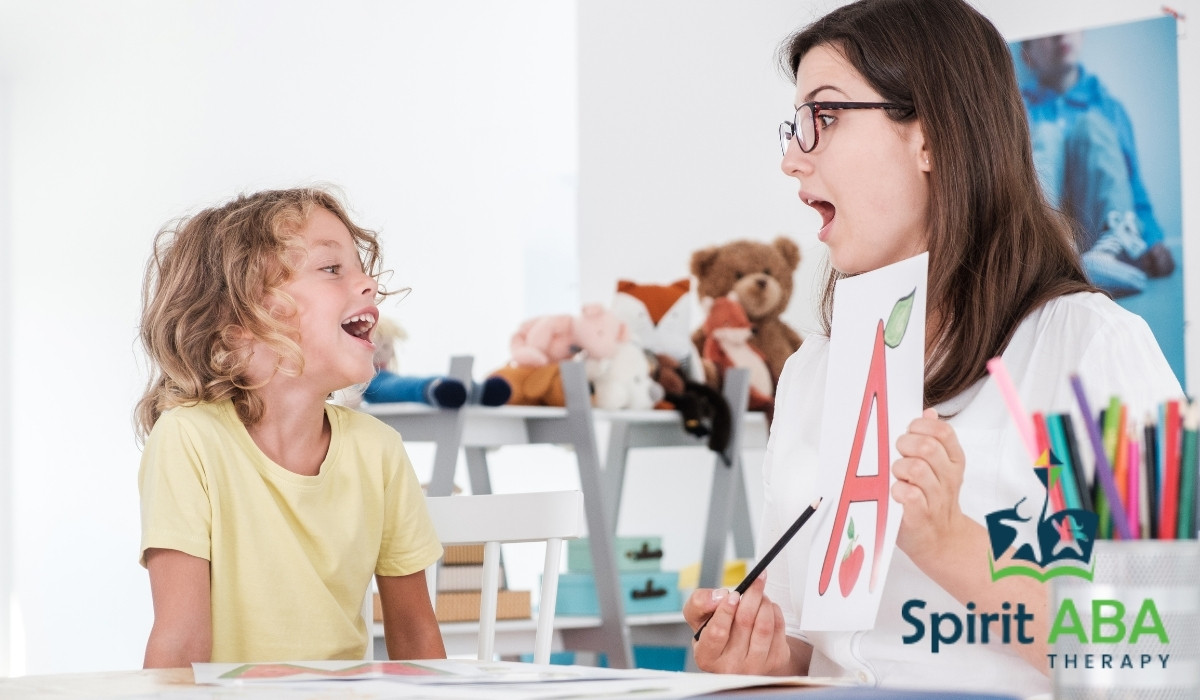Key Points:
- ABA therapy can support speech development in children with autism, though it’s not a replacement for speech therapy.
- Techniques like prompting, reinforcement, and shaping are used to encourage communication.
- Combining ABA therapy with other therapies often yields the best results for children struggling with speech delays.
Sometimes it feels like the words are just out of reach, and every little sound your child makes feels like a victory. Helping a child with autism find their voice can feel overwhelming — but there’s hope, and there are proven strategies that make a difference.
Does ABA Therapy Help With Speech in Autism?
Yes — ABA therapy can help with speech and language development for children with autism, although it’s not a stand-alone cure for speech delays.
Many parents wonder, “Does ABA therapy help with speech?” because communication difficulties are one of the most common challenges kids on the spectrum face. The answer lies in how ABA (Applied Behavior Analysis) works: by breaking skills down into small, teachable steps and rewarding progress, even minimal, ABA can build communication skills over time.
ABA therapy focuses on improving behaviors that are socially significant — and for most families, speech and communication are at the top of that list. Whether it’s spoken words, gestures, or using tools like PECS (Picture Exchange Communication System), ABA therapists tailor the approach to meet the child’s unique needs and strengths.
Understanding How ABA Supports Speech
ABA therapy doesn’t “teach speech” in the way a speech-language pathologist would. Instead, it creates the conditions where communication becomes easier and more rewarding for the child.
Here are some of the core ways ABA therapy supports children in developing speech and communication:
- Motivation-based learning: ABA therapists often find what excites and motivates a child, then use that to encourage communication. For example, a favorite toy might only be given when the child makes an attempt to say or sign the word for it.
- Prompting and fading: Therapists provide cues or help (prompts) to get the child to make a sound or word and gradually reduce that help so the child can say it independently.
- Reinforcement: Every small step toward communication is rewarded, which strengthens the likelihood of it happening again.
- Shaping behaviors: If a child can’t yet say “ball,” the therapist might reinforce approximations like “ba” and build from there.
Through these techniques, ABA helps children make progress at their own pace, turning non-verbal behaviors into more meaningful forms of communication.
Speech vs. Communication: Why Both Matter
It’s important to distinguish between speech and communication. Not all children with autism develop verbal speech, but all children can learn to communicate — whether through words, signs, pictures, or devices.
Focusing first on functional communication — the ability to express wants, needs, and feelings — reduces frustration for both the child and their family. ABA can help establish communication in any form, which sometimes eventually leads to verbal speech.
Many families find that when a child learns to communicate effectively, their frustration-driven behaviors (like tantrums or aggression) decrease. This is because the child now has a way to express themselves in ways others can understand.
When to Combine ABA with Speech Therapy
While ABA therapy helps build the foundation for communication, speech-language pathologists (SLPs) are specifically trained to address speech mechanics, like articulation, oral motor skills, and language processing.
Parents often choose to combine ABA with speech therapy when:
- The child struggles to form specific sounds or words despite ABA progress.
- There are signs of oral motor challenges, like drooling or difficulty chewing.
- The child has very limited vocabulary or understanding of language concepts.
Working together, ABA therapists and SLPs can create a coordinated plan that helps your child reach their communication potential.
Practical Tips for Parents Supporting Speech at Home
ABA doesn’t stop when the therapist leaves — parents play a huge role in reinforcing communication skills among other daily living skills at home.
Here are some parent-friendly ways to build on what your child is learning in ABA therapy:
- Create opportunities for communication: Instead of anticipating your child’s needs, wait for them to ask (even nonverbally) for what they want.
- Use simple language: Speak in short, clear phrases so your child can model what you say.
- Pause and wait: Give your child extra time to respond — sometimes it takes a few seconds longer for them to process and answer.
- Celebrate every attempt: Even if it’s just a sound or gesture, acknowledge and praise your child’s efforts to communicate.
- Make it fun: Play games that involve taking turns, naming things, and making choices.
The more a child sees that communication works — and leads to positive outcomes — the more likely they are to keep trying.
Why Progress Looks Different For Every Child
One of the most important things to keep in mind is that progress in speech and communication varies widely from child to child. Some children may begin speaking in full sentences within months, while others may rely on alternative communication methods for longer periods — and that’s okay.
Several factors can influence how quickly and effectively ABA therapy helps with speech:
- Age when therapy begins
- Severity of autism symptoms
- Presence of other developmental conditions
- Consistency and quality of therapy
- Family involvement in practicing skills
Patience, consistency, and collaboration with professionals can help maximize your child’s success.
How to Know If ABA is Right for Your Child
If you’re wondering whether ABA is the right path to help your child with speech, consider:
- Does your child struggle to express basic needs and feelings?
- Do they show frustration when not understood?
- Are they highly motivated by specific things like toys, snacks, or activities?
If the answer to any of these is yes, ABA therapy could play an important role in their communication journey. It’s also worth consulting with your child’s healthcare team to decide the best approach.
Ready to Support Your Child’s Communication?
Helping a child find their voice — through speech, signs, or other methods — is one of the most meaningful steps you can take. Spirit ABA is here to guide you through that journey with compassionate, individualized ABA therapy in Iowa, Colorado, and Nebraska.
Our experienced team works with children and their families to build communication skills, reduce frustration, and open up a world of connection. If you’ve been wondering, does ABA therapy help with speech, our team is ready to show you how it can make a difference.
Get in touch with us today and take the first step toward helping your child thrive!



